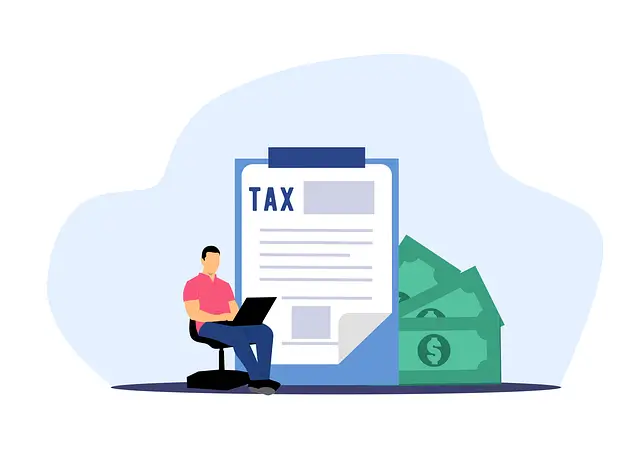Table of Contents
Introduction to Using 529 Plans for Debt Repayment
529 plans have long been a favored means of education financing, but recent changes have further extended their edge to 529 student loan repayment. Though traditionally used to save for college tuition and fees, the plans are now being viewed as a strategic remedy to reduce student debt. The emerging trend offers creative opportunities for graduates and families to harness tax advantages while combating the student loan crisis.
Here in this guide, we shall discuss how you can use your 529 plan not only to save for school but also as an effective method of student loan repayment. If you understand the benefits, terms, and good practices, then you will be able to make good money choices that optimize your entire debt management strategy and future savings.
Understanding 529 Plans for Student Loan Repayment
Traditionally meant to pay higher education expenses such as tuition, housing and board, and textbooks, 529 plan provide tax-deferred growth and tax-free withdrawals for qualifying expenses. With changing criteria, some account holders are looking at how leftover funds might be used to pay off student debts.

Notable and important highlights are as follows:
- Tax Benefits: The investments in a 529 plan grow tax-deferred, and distributions for qualified education expenses are exempt from federal taxation. In the case of use in the repayment of student loans, these tax benefits can reduce the net indebtedness.
- Flexibility and Control: Although they were intended for the financing of current education expenses, the recent rulings have managed to find ways to apply leftover amounts for the payment of student loans, thus creating an indirect mechanism for financing education debt.
- State-Specific Incentives: A majority of states possess additional incentives, such as state tax credits or deductions, which can be used to complement the economic benefit of using 529s to pay student loans. As rules and incentives differ from state to state, state-specific policies need to be referred to.
It is worth being aware of these traits to anyone who is considering this novel application of a 529 plan. By understanding the overall pros and cons, you can make more informed decisions about incorporating student loan payment into your overall financial strategy.
How 529 Student Loan Repayment Works
Paying student loans via a 529 plan is easy with straightforward steps and guidelines on who can do that. Here is how it normally works:
Eligibility and Guidelines
Not all College Savings Plans allow you to pay off student loans. Find out if yours does and if there are any regulations for your state. Most of the time, the funds have to come from the same 529 plan and have some repayment regulations.
Withdrawal Process
To withdraw from your 529 to pay for student loans, you would withdraw funds as you would for tuition or other educational expenses. However, you must ensure the money withdrawn is qualified under the regulations to pay for qualified student loan costs. In most cases, you will be expected to present proof that you utilized the money in such qualified spending.
Tax Consequences and Disclosure
Although withdrawals of ordinary education expenses are exempt from taxation, use of funds to pay for student loans might be taxed otherwise. It is important to know how the withdrawals are handled on your tax return. To ensure compliance and maximize your tax advantage, it is best to consult a financial advisor or a tax expert.
Strategic Considerations
Paying student loans with a 529 plan is not just about debt elimination—it’s about simplifying your overall financial strategy. By actively managing contributions between future educational costs and loan repayment, you can maximize both tax savings and long-term savings. The tactic can be particularly valuable if you have excess funds in your plan or if market conditions are such that it’s a good idea to pay off high-interest student loans aggressively.
Maximizing Tax Benefits and Savings
Utilizing a 529 plan loan repayment is of huge tax advantage. Your money in the 529 plan gains tax-free income, and if used towards eligible student loan repayment, the withdrawals are exempted from tax, giving you more to repay.

Various states even provide tax credits or deductions towards 529 contributions. This can once more grow the value of your 529 money if used towards loan repayment.
With 529 funds used to pay back student loans, one also saves on interest paid on loans. By prepaying or making a payment above the scheduled, you save on interest in the long term on high-interest loans.
Cost Savings on Interest
The main tax benefit of investing in a 529 plan is that the earnings are tax-deferred and withdrawals to repay a qualified loan are tax-free. This reduces your tax liability and enables you to contribute more to the repayment of your student loan.
Some states also provide tax credits or deductions on contributions to a 529 plan, which can also increase savings, depending on your state.
Balanced Financial Approach
To maximize your plans for student loan repayment, use it to eliminate high-interest loans. These loans will end up costing you less interest in the long run.
You must also take maximum withdrawals in order to stay within the tax code and lower liabilities. Keeping records of your withdrawals accurate will keep you in line with IRS requirements.
Finally, combining your 529 plan for student loan repayment with other methods, like federal loan forgiveness or refinancing, will enable you to come up with a balanced strategy that accelerates your debt payoff.
Frequently Asked Questions (FAQs)
1. Can all 529 plans be used for student loan repayment?
Not all 529 plans offer the option for student loan repayment. It’s crucial to review your plan’s details and consult with your plan administrator to understand the specific guidelines and restrictions.
2. What qualifies as a student loan repayment expense?
Generally, qualified student loan repayment expenses include repayments that align with the IRS guidelines. However, the interpretation of “qualified expenses” may vary by plan, so professional advice is recommended.
3. Are there limits on how much I can use for student loan repayment?
Some plans may impose limits on the amount that can be withdrawn for student loan repayment. These limits could be annual or lifetime caps, so verifying the terms of your specific plan is essential.
4. How will this impact my future education savings?
Using 529 funds for student loan repayment can reduce the amount available for future educational expenses. A balanced approach is necessary to ensure that both immediate debt reduction and long-term educational goals are met.
5. What are the tax implications of using 529 funds for loan repayment?
While there are significant tax advantages, it’s important to understand any potential tax liabilities or reporting requirements. Consulting a tax professional can help you navigate these nuances effectively.
Bottom Line
Using a 529 plan for student loan repayment is a smart strategy to manage debt and take advantage of tax benefits. To get started, review your 529 plan to ensure loan repayment is an option and consult a financial advisor for tailored advice.
Optimize your withdrawals to maximize tax savings and reduce your student loan burden efficiently. With the right approach, you can significantly improve your financial situation.








